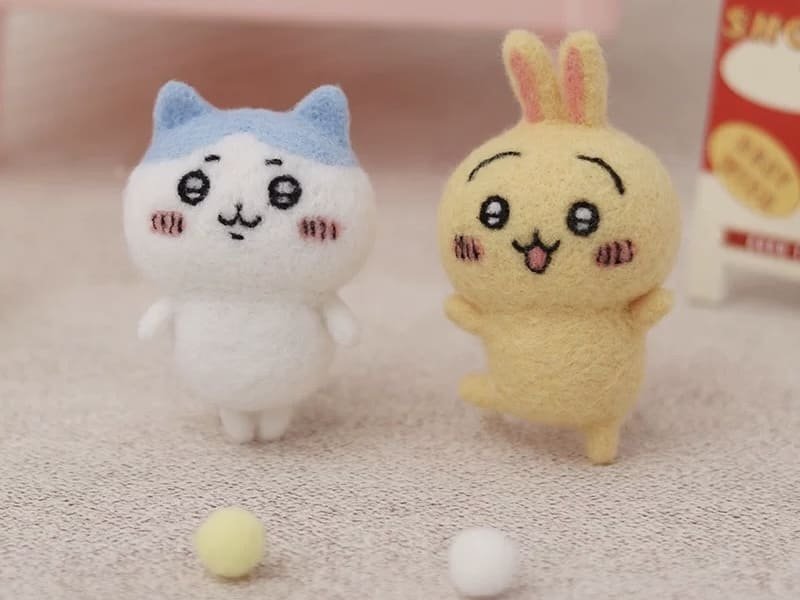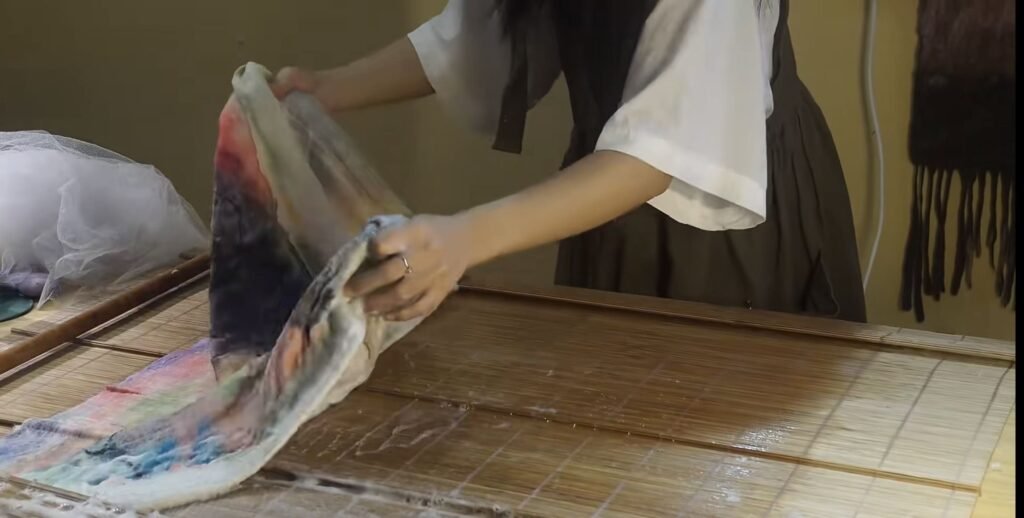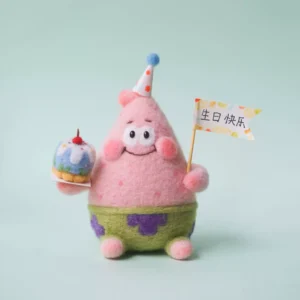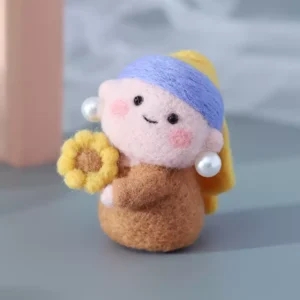Needle Felting FAQ:

what is needle felting definition?

Needle felting is an artful technique in which wool fibers are poked and prodded repeatedly using a serrated felting needle, causing them to intertwine tightly together until forming an object of solid shape.
Needle Felting Definition

What is Needle Felting?
Needle felting is a dry felting technique using specially designed barbed needles to manipulate wool fibers into felt fabric or three-dimensional sculptures.
This craft requires repeatedly stabbing wool with needles fitted with notches or barbs along their shafts in order to tangle its fibers together until forming dense, sculptural forms.
Needle Felting Video Tutorial
Historical Context
Needle felting dates back to the 1980s when it was pioneered by David and Eleanor Stanwood who modified industrial felting techniques by using needles from wool factories for creating handmade felt without using water or soap.

Felt has been one of the earliest textile forms ever documented in human history, dating back to at least 6500 BC – over eight thousand years before weaving or knitting technologies came into being.

How Needle Felting Works
Wool fibers contain multiple scales visible under a microscope that overlap, which become caught and entangled when stimulated with barbed needles.
Notches on felting needles snag and push fibers as they poke into wool fabric, leading them to twist among themselves and form dense mass with density and form.

Types of Felting
Needle Felting vs. Wet Felting
There are two primary felting techniques, needle felting (dry felting) and wet felting.
Needle felting, also referred to as dry felting, uses a barbed needle to manipulate fibers until they tangle and snag in an impregnable bond, while wet felting requires lots of water in which fibers are wetted with detergent before being scrubbed together into fabric.

Basic Technique
Needle felting starts by rolling up small bits of wool and puncturing it with needle. This process causes its fibers to intertangle; industrial felt-makers use machines for this process; however, artists began needle felting by hand during the late 20th century.

Difference from Wet Felting
Needle Felting: Needle felting is an intricate method for crafting 3D designs using notched needles for detailed work and 3D designs. It provides intricate surfaces for intricate work as well as beautiful 3D results.
Wet Felting: Utilizing hot, soapy water to mix wool fibers together into an even felted fabric is known as wet felting; typically used to create flat pieces such as scarves and fabric panels.

Additional Notes:
- Needle felting is different than wet felting; rather than needing hot water and soapy bathwater to create its fabric-binding surface, needle felting uses only needle punches to bring together fibers into one cohesive mass.
- Needle felting is ideal for both personal crafts and industrial production of felt products.
- Wool is often employed, though other animal fibers like alpaca and mohair may also be utilized for use.






호빠
This blog was… how do you say it? Relevant!! Finally I have
found something which helped me. Thanks a lot!
호빠
Hi, all is going well here and ofcourse every one is sharing data, that’s
genuinely good, keep up writing.
호빠
When someone writes an piece of writing he/she maintains the image of a user in his/her mind that how a user can understand it.
Therefore that’s why this post is perfect.
Thanks!
호빠
I’ve read some excellent stuff here. Definitely price bookmarking for revisiting.
I surprise how much effort you place to create this sort of magnificent informative web site.
호빠
bookmarked!!, I like your site!